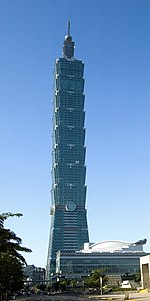Abstract:
This study aims to evaluate the non-market values of ecosystem services generated by wetlands in southern Quebec. To accomplish this, we evaluated the value of wetland services related to (1) habitat for biodiversity, (2) flood control, (3) water quality and (4) climate regulation. Two non-market valuation methods are proposed, contingent valuation and choice experiment. Our study aims to measure both the population's willingness to pay (WTP) for wetland preservation and restoration and to understand which environmental attributes and socioeconomic characteristics motivate people's responses. We also compared the results of the two methods. Our conclusion suggests that the two methods provide statistically convergent WTP values, both in total value and in relative importance for different attributes involved. Our result also confirms the coefficient equivalence between the estimation models using the data from the two methods.
...
Wetlands are among the most important and productive natural systems on the planet. Canada hosts 25% of the planet’s wetlands (127 million hectares; Environnement Canada 2004). In urban areas, however, their extent has been reduced by 80% 98% over the last two centuries because of drainage, filling or direct destruction (Environment Canada 1991).....
...
This study evaluates the value of four services provided by wetlands ... via two non-market valuation methods, CV [Contingent Valuation] and CE [Choice Experiment].
...
In this study, we used two non-market valuation methods (CV and CE) to estimate the social benefit generated from improving wetlands in Quebec through preservation and restoration. Our results show that the WTP per year per household varies from $447 (CE) to $465 (CV), depending on methods. This mean WTP value can also be affected by respondents’ socioeconomic characteristic such as age (¡), income (C), education (C), gender (male > female), etc. Our conclusion suggests that the two methods provide statistically convergent WTP values, both in total value and in relative importance of different attributes involved. Using the method proposed by Swait and Louviere (1993), our result also confirms the coefficient equivalence between the estimation models using the data from the two methods. These conclusions suggest a fairly robust and consistent equivalence between CV and CE and provide an interesting contrast with the study of Christie and Azevedo (2009), which suggested that the WTP reported by repeated CV data to be lower than that reported by full-set CE data, but at the same time, it provided the evidence of coefficient equivalence between the two methods.

We can also compare our WTP value to that reported by previous Canadian studies that evaluated the similar wetland-related ecological services. Pattison, Boxall, and Adamowicz (2011) based on a scenario aiming at restoring the wetlands in Manitoba to 100% of 1968 level, reported a range of $319- $375 for annual per household WTP which englobes five attributes: water quality, flood control, soil erosion, wildlife habitat, carbon capture and storage.13 Lantz et al. (2013), based on a scenario of over 40% increase in wetland area in southern Ontario, reported a WTP per year per household varying from $264 to $273 for the improvement of four attributes: water quality, flood control, wildlife habitat and carbon storage.
Finally, Dias (2011) reported a range of WTP varying between $240 and $375 per annual per household, but their study only considered three attributes, including riparian buffer width, wildlife habitat and water quality. Clearly, the composition of ecological service attributes proposed in our paper is very similar to that of Pattison, Boxall, and Adamowicz (2011), it is therefore logic to see our reported WTP per year per household to be closest to this study, with the WTP values reported by Pattison, Boxall, and Adamowicz (2011) falling well into the 95% confidence interval of our WTP estimate.
Multiplying the per household per year payment with the number of the household in Quebec (i.e. 3,325,584), we can obtain the total yearly value of the ES generated by the restored wetlands in Quebec as being equal to 1.49 1.55 billion dollars for 400,000 hectares or approximately $3,725- $3,866 per hectare per year. This result is comparable with values obtained through benefit transfer approaches for the wetlands in Quebec, such as Dupras, Alam, and Rev eret (2015), $5,284 -$5,463/ha/year for five ES,16 and Dupras and Alam (2015), $4593/ha/year for seven ES, both for the region of Montreal, or He et al. (2015), $4702 and $9080/ha/year for the average value of the wetland located in the drainage basins of Yamaska and Becancour rivers based on a metaanalysis and detailed geographical information.








